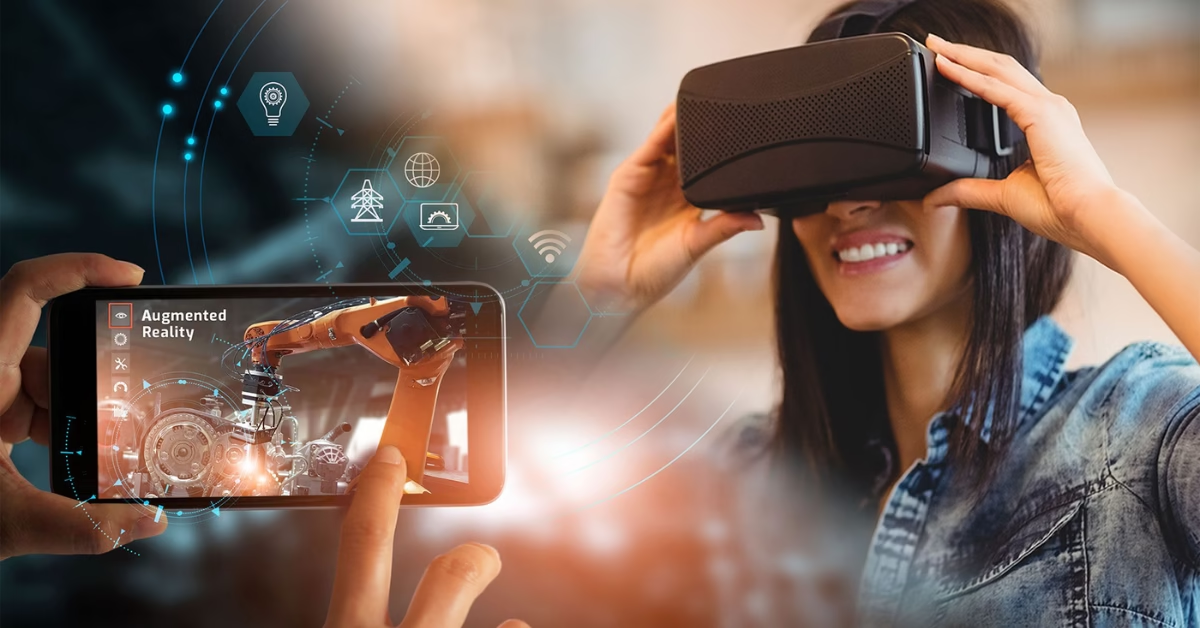Emerging tech in mobile has completely transformed how people interact with digital platforms. Augmented reality (AR), virtual reality (VR), and other innovative technologies are pushing the boundaries of what mobile apps can achieve. Businesses that understand these shifts are better positioned to deliver immersive, user-first experiences while staying ahead in a competitive market.
This article explores how AR in mobile apps, VR in mobile experiences, and the broader future of mobile technology are shaping industries. You’ll also learn practical use cases, strategies for adoption, and best practices to ensure cost-efficient implementation.
Why Emerging Tech in Mobile Matters
The rise of AR and VR in mobile apps isn’t just a trend—it’s a significant shift in digital interaction. According to Statista, the global AR and VR market is projected to surpass $250 billion by 2028. With smartphones being the most accessible device for billions, integrating immersive features directly into mobile applications makes these technologies mainstream.
Businesses in e-commerce, healthcare, education, and gaming are leveraging AR and VR to deliver engaging and scalable mobile solutions. As mobile hardware evolves, developers can push performance while keeping infrastructure costs balanced with smart scalability practices.
AR in Mobile Apps: Redefining User Experiences
AR in mobile apps allows users to overlay digital elements in their real-world environments. From shopping apps that let customers visualize furniture in their homes to healthcare apps guiding patients with real-time instructions, AR bridges the digital and physical world.
AR in E-Commerce Mobile Apps
Retailers increasingly rely on AR in mobile apps to boost engagement and conversion. For instance, IKEA’s AR-powered mobile app lets customers preview furniture in their living rooms before purchasing. This reduces returns while enhancing user satisfaction.
AR in EdTech Mobile Solutions
Educational platforms use AR to make learning interactive. Students can explore 3D models of planets, anatomy, or historical artifacts directly through smartphones. This makes education more engaging while remaining accessible.
AR in Healthcare Mobile Apps
AR in healthcare apps is revolutionizing patient care and training. Surgeons use AR-based mobile simulations for practice, while patients benefit from guided treatment visuals. These implementations highlight how AR ensures accuracy while remaining cost-efficient.
VR in Mobile Apps: Taking Immersion Further
While AR overlays information, VR in mobile apps immerses users in fully virtual environments. Advances in mobile processors, 5G connectivity, and lightweight VR headsets are making VR experiences more accessible.
VR in Gaming and Entertainment
Mobile VR apps deliver immersive gaming experiences, from racing simulations to virtual concerts. Platforms like Oculus and PlayStation VR integrate with mobile devices, broadening the reach of VR entertainment.
VR in Real Estate Mobile Applications
VR in real estate apps allows potential buyers to tour properties virtually without being physically present. This reduces travel costs while speeding up decision-making.
VR in Corporate Training Apps
Companies use VR mobile apps for employee training in industries like aviation, manufacturing, and healthcare. These simulations are safer, more cost-efficient, and improve retention compared to traditional training.
Beyond AR and VR: The Future of Mobile Technology
Emerging tech in mobile goes beyond AR and VR. Innovations such as AI-powered personalization, IoT-enabled apps, and edge computing are shaping the future of mobile experiences.
AI in Mobile Applications
Artificial intelligence enhances mobile apps by enabling chatbots, predictive recommendations, and real-time analytics. This makes apps more personalized and responsive without adding excessive infrastructure costs.
IoT in Mobile Apps
Mobile apps act as the control center for IoT devices, from smart homes to wearable healthcare solutions. Businesses can create seamless integrations that provide value while maintaining secure and cost-efficient infrastructure.
Edge Computing in Mobile Tech
Edge computing reduces latency by processing data closer to the user. This is vital for AR in mobile apps and VR in mobile apps, where speed and responsiveness directly affect immersion.
Industry-Specific Applications of Emerging Tech in Mobile
Emerging tech in mobile has industry-specific use cases that highlight its transformative potential.
E-Commerce Mobile Platforms
Retailers implement AR for product visualization and VR for immersive shopping experiences. These innovations drive sales while reducing costly returns.
Healthcare Mobile Solutions
Healthcare apps integrate AR for guided surgeries and VR for patient therapy. Cloud-based compliant storage ensures secure yet cost-efficient adoption of emerging tech.
EdTech Mobile Platforms
AR and VR in mobile apps make education engaging through virtual classrooms and interactive lessons. Serverless computing ensures scalability as student demand fluctuates.
Fintech Mobile Apps
Emerging tech in fintech apps includes biometric authentication, AR-powered financial dashboards, and AI-driven fraud detection. These features improve trust and user experience without inflating costs.
Social Media Mobile Apps
Social platforms adopt AR filters, VR chat rooms, and AI-driven personalization to enhance engagement. CDNs and auto-scaling infrastructure ensure smooth experiences without overspending.
Best Practices for Adopting Emerging Tech in Mobile
When implementing AR, VR, or other mobile innovations, businesses must follow strategies that balance innovation with efficiency.
Define Clear Objectives
Establish what you aim to achieve—whether it’s boosting engagement, improving training, or reducing costs.
Use Auto-Scaling Infrastructure
Leverage auto-scaling to manage traffic spikes during app usage, keeping performance consistent without high costs.
Prioritize Security and Compliance
For industries like healthcare and fintech, compliance is non-negotiable. Use secure cloud storage and encryption to maintain trust.
Test Across Devices
AR and VR experiences differ across mobile devices. Testing ensures consistent performance and accessibility.
Monitor Real-Time Analytics
Use monitoring tools like Datadog or New Relic to identify performance bottlenecks before they inflate costs.
For a deeper dive into AR and VR in mobile development, check out Google’s ARCore and VR resources for developers.
Want to learn about cost-efficient scalability for mobile applications? Explore our guide on Cost-Efficient Infrastructure for Growing Apps to balance innovation with efficiency.
FAQs
AR enhances customer engagement, improves decision-making, and bridges digital with real-world experiences across industries like retail, healthcare, and education.
VR enables immersive training, virtual tours, and simulations, reducing costs and enhancing outcomes compared to traditional methods.
Industries like e-commerce, healthcare, education, fintech, and entertainment benefit most, as AR and VR improve engagement, efficiency, and scalability.
By using auto-scaling, serverless computing, and real-time monitoring, businesses can adopt AR and VR without overspending.
AI enables personalized experiences, smarter recommendations, and predictive analytics, ensuring apps remain responsive and competitive.













